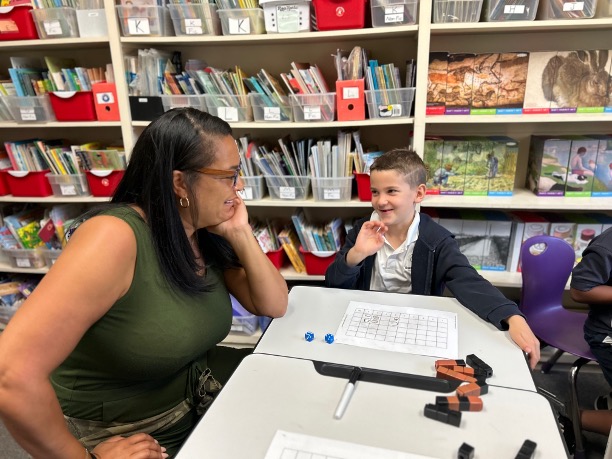“Because almost all the rest use a plus but that one uses a minus; that’s the only one that uses the minus.”
1st grade Mathematicians played “Which One Doesn’t Belong” this week, warming up their noticing and terminology about equations and expressions as they compared and contrasted four related examples. After the warm-up, students looked at a math story picture, showing a scene with multiple children and adults, some standing, some sitting at tables, some using pattern blocks, some using markers or pens, some watching. The activity challenged students to look closely and generate a math question that peers could describe with an equation and solve using the picture.
There are 6 kids making shapes and two teachers watching, how many people are there all together?
Students wrote a wide range of math questions, like “There are six kids making shapes and two teachers watching, how many people are there all together?” And, “If we split the two tables, how many people are at each table?” Students presented their question, covering up their solution and equation, under the document camera for all to see. They called on peers to offer an equation to match, and their teacher supported them to find as many possible equations that worked. After sharing equations and a solution, students discussed where to “put the box,” which is used in 1st Grade to highlight the unknown value or values. If there are 10 markers and 9 pencils, how many are all together? “10+9=19” is one way to show this. Where would the box go? As one student explained, “[Around] the 19 because that isn’t what he wrote.”
In one question, students realized there were two unknown values and more than one possible solution based on how the solver understood the “split tables” idea. Whichever flexible, small group students learn math in, these community warm-ups and discussions stretch their math flexibility, communication, and ability to understand others’ reasoning, and prepare them to solve word problems that vary in the position of unknown value and that have either one or many possible solutions.

